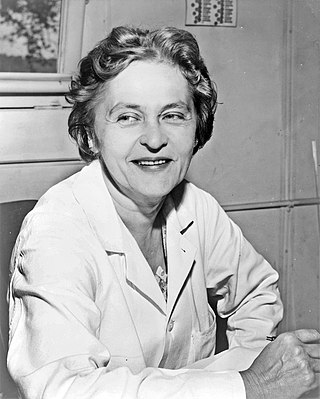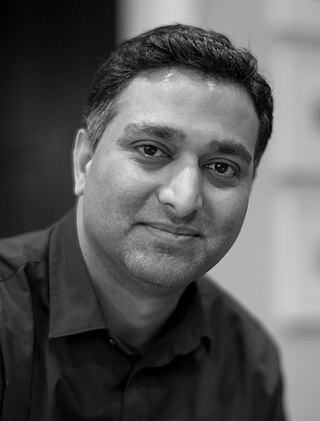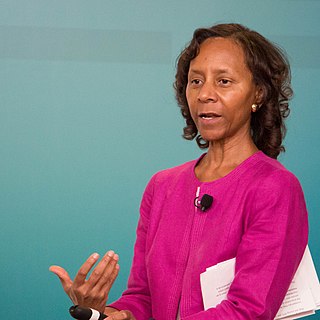Related Research Articles

Dean Lawrence Kamen is an American engineer, inventor, and businessman. He is known for his invention of the Segway and iBOT, as well as founding the non-profit organization FIRST with Woodie Flowers. Kamen holds over 1,000 patents.

Engineering is the practice of using natural science, mathematics, and the engineering design process to solve technical problems, increase efficiency and productivity, and improve systems. Modern engineering comprises many subfields which include designing and improving infrastructure, machinery, vehicles, electronics, materials, and energy systems.
The Lemelson–MIT Program awards several prizes yearly to inventors in the United States. The largest is the Lemelson–MIT Prize which was endowed in 1994 by Jerome H. Lemelson, funded by the Lemelson Foundation, and is administered through the School of Engineering at the Massachusetts Institute of Technology. The winner receives $500,000, making it the largest cash prize for invention in the U.S.

Ashok Gadgil Is the Andrew and Virginia Rudd Family Foundation Distinguished Chair and Professor of Safe Water and Sanitation at the University of California, Berkeley. He is a Faculty Senior Scientist and has served as director of the Energy and Environmental Technologies Division at Lawrence Berkeley National Laboratory.
The phase-change incubator is a low-cost, low-maintenance incubator that tests for microorganisms in water supplies. It uses small balls containing a chemical compound that, when heated and then kept insulated, will stay at 37 °C for 24 hours. This allows cultures to be tested without the need for a laboratory or an expensive portable incubator. Thus it is particularly useful for poor or remote communities. The phase-change incubator was developed in the late 1990s by Amy Smith, when she was a graduate student at MIT. Smith has also started a non-profit organization called A Drop in the Bucket to distribute the incubators and to train people on how to use them to test water quality. Her “Test Water Cheap” system could be used at remote locations to test for bacteria such as E.coli.

Radia Joy Perlman is an American computer programmer and network engineer. She is a major figure in assembling the networks and technology to enable what we now know as the internet. She is most famous for her invention of the Spanning Tree Protocol (STP), which is fundamental to the operation of network bridges, while working for Digital Equipment Corporation, thus earning her nickname "Mother of the Internet". Her innovations have made a huge impact on how networks self-organize and move data. She also made large contributions to many other areas of network design and standardization: for example, enabling today's link-state routing protocols, to be more robust, scalable, and easy to manage.
David Levy is an inventor with more than a dozen patents. He also served as "Inventor in Residence" to Arthur D. Little Consulting. He received a bachelor's degree in mechanical engineering with a concentration in architecture and master's degree in mechanical engineering at the Massachusetts Institute of Technology in 1987 and a doctorate in mechanical engineering from MIT in 1997. Between degrees he worked for five years at Apple, replacing the Trackball with the first Touchpad and repositioning the laptop keyboard from the front to the back.

Mária Telkes was a Hungarian-American biophysicist and inventor who worked on solar energy technologies.

A timeline of United States inventions encompasses the ingenuity and innovative advancements of the United States within a historical context, dating from the Contemporary era to the present day, which have been achieved by inventors who are either native-born or naturalized citizens of the United States. Patent protection secures a person's right to his or her first-to-invent claim of the original invention in question, highlighted in Article I, Section 8, Clause 8 of the United States Constitution which gives the following enumerated power to the United States Congress:
To promote the Progress of Science and useful Arts, by securing for limited Times to Authors and Inventors the exclusive Right to their respective Writings and Discoveries.
Walter Lincoln Hawkins was an American chemist and engineer widely regarded as a pioneer of polymer chemistry. For thirty-four years he worked at Bell Laboratories, where he was instrumental in designing a long-lasting plastic to sheath telephone cables, enabling the introduction of telephone services to thousands of Americans, especially those in rural communities. In addition to his pioneering research, Hawkins is also known for his advocacy efforts for minority students. He also served as the chairman of Montclair State University in 1973. Amongst his many awards, Hawkins was the first African-American to be elected to the National Academy of Engineering (1975), and, shortly before his death in 1992, he was awarded the National Medal of Technology by then-U.S. president, George H. W. Bush.
The Lemelson Foundation is an American 501(c)(3) private foundation. It was started in 1993 by Jerome H. Lemelson and his wife Dorothy. The foundation held total net assets of US$444,124,049 at the end of 2020 and US$484,432,021 at the end of 2021.

Nathan "Nate" Ball is an American mechanical engineer, entrepreneur, TV host, children's author, pole vaulter, and beatboxer.

Sangeeta N. Bhatia is an American biological engineer and the John J. and Dorothy Wilson Professor at MIT’s Institute for Medical Engineering and Science and Electrical Engineering and Computer Science (EECS) at the Massachusetts Institute of Technology (MIT) in Cambridge, Massachusetts, United States. Bhatia's research investigates applications of micro- and nano-technology for tissue repair and regeneration. She applies ideas from computer technology and engineering to the design of miniaturized biomedical tools for the study and treatment of diseases, in particular liver disease, hepatitis, malaria and cancer.
Squid Labs was an American independent research and development company founded by a group of four MIT graduates. In 2004, Colin Bulthaup, Dan Goldwater, Saul Griffith, and Eric Wilhelm moved from the East Coast to California to found the company known as Squid Labs. During its years of existence from 2004 to 2007, Squid Labs added three more members to its team: Geo Homsy, Corwin Hardham and Ryan McKinley. Working out of a warehouse in Emeryville, the group adopted the slogan "We're not a think tank, we're a do tank." and created a handful of patents and inventions including an electronically sensed rope, portable pull-cord generators, and a machine that could manufacture eyeglasses of any prescriptions at extremely low cost. Squid Labs was also the birthplace for many companies still running today, such as Makani Power and Howtoons. Although the company no longer exists, Squid Lab's co-founder, Saul Griffith created a similar company in San Francisco named Otherlab.

Megan J. Smith is an American engineer and technologist. She was the third Chief Technology Officer of the United States and Assistant to the President, serving under President Barack Obama. She was previously a vice president at Google, leading new business development and early-stage partnerships across Google's global engineering and product teams at Google for nine years, was general manager of Google.org, a vice president briefly at Google[x] where she co-created WomenTechmakers, is the former CEO of Planet Out and worked as an engineer on early smartphones at General Magic. She serves on the boards of MIT and Vital Voices, was a member of the USAID Advisory Committee on Voluntary Aid and co-founded the Malala Fund. Today Smith is the CEO and Founder of shift7. On September 4, 2014, she was named as the third U.S. CTO, succeeding Todd Park, and serving until January, 2017.

Ramesh Raskar is a Massachusetts Institute of Technology associate professor and head of the MIT Media Lab's Camera Culture research group. Previously he worked as a senior research scientist at Mitsubishi Electric Research Laboratories (MERL) during 2002 to 2008. He holds 132 patents in computer vision, computational health, sensors and imaging. He received the $500K Lemelson–MIT Prize in 2016. The prize money will be used for launching REDX.io, a group platform for co-innovation in Artificial Intelligence. He is well known for inventing EyeNetra, EyeCatra and EyeSelfie, Femto-photography and his TED talk for cameras to see around corners.
Jay Saul Silver is an electrical engineer and toy inventor from Cocoa Beach, Florida. Silver is the Founder and CEO of JoyLabz and MaKey MaKey and was the first-ever Maker Research Scientist at Intel.
Joshua Siegel is an American mechanical engineer, inventor, and entrepreneur. As of January 2019, he is an assistant professor of computer science and engineering at Michigan State University. Previously, he was a research scientist at MIT, the lead instructor of MIT's Internet of things Bootcamp, a parallel entrepreneur and founder of the connected car startup and consultancy CarKnow LLC as well as the vehicle prognostic startup DataDriven. His research areas include connected vehicle technologies, pervasive sensing, and secure and efficient architectures for connectivity. Siegel and his companies have been recognized with several awards for his work developing platforms to collect and analyze vehicle data, including the Lemelson-MIT Student Prize and the MassIT Government Innovation Prize.

Marian Rogers Croak is a Vice President of Engineering at Google. She was previously the Senior Vice President of Research and Development at AT&T. She holds more than 200 patents. She was inducted into the Women in Technology International Hall of Fame in 2013. In 2022, Croak was inducted into the National Inventors Hall of Fame for her patent regarding VoIP Technology. She is one of the first two Black women to receive that honor, along with Patricia Bath. Her invention allows users to make calls over the internet instead of a phone line. Today, the widespread use of VoIP technology is vital for remote work and conferencing.
References
- ↑ "Smith, Amy", in A to Z of Women in Science and Math, by Lisa Yount (Infobase Publishing, 2007) p 275.
- ↑ "Amy Smith". d-lab.mit.edu. Retrieved February 27, 2023.
- ↑ "eHealth in Developing Countries". cyber.law.harvard.edu. Retrieved May 31, 2019.
- 1 2 3 4 5 6 7 8 9 10 11 12 13 14 15 16 "Technology as a form of altruism" by Roberta Holland, Boston Business Journal, February 25, 2000
- 1 2 3 4 5 6 7 8 9 "Interview: Amy Smith, Inventor" Archived September 23, 2009, at the Wayback Machine by Amy Crawford, Smithsonian magazine, September 1, 2006
- 1 2 "A MacGyver for the Third World" Archived January 4, 2006, at the Wayback Machine by Kari Lynn Dean, World News, October 22, 2004
- ↑ "2006/02/mit-report-amy-smith-in-ghana". fullbellyblog.blogspot.com. Retrieved May 31, 2019.
- ↑ "Archived copy" (PDF). Archived from the original (PDF) on June 24, 2012. Retrieved August 26, 2012.
{{cite web}}: CS1 maint: archived copy as title (link) - ↑ "Resources | MIT D-Lab". d-lab.mit.edu. Retrieved May 31, 2019.
- 1 2 3 "Making a difference in the developing world" by Heather Manning, MIT News, July 13, 2007.]
- ↑ "South-South Design Flourishes at MIT Summit" Archived August 26, 2007, at the Wayback Machine by Jonathon Greenblatt, World Changing. August 14, 2007
- ↑ "Rethink Relief - About" . Retrieved May 27, 2012.
- ↑ "Rethink Relief Projects". Archived from the original on May 3, 2013. Retrieved May 27, 2012.
- ↑ "In the World: Cultivating creativity | MIT News". web.mit.edu. May 9, 2011. Retrieved May 31, 2019.
- ↑ "What is CCB?". Archived from the original on August 10, 2015. Retrieved August 26, 2012.
- ↑ "Amy Smith - MacArthur Foundation". www.macfound.org. Retrieved August 12, 2018.